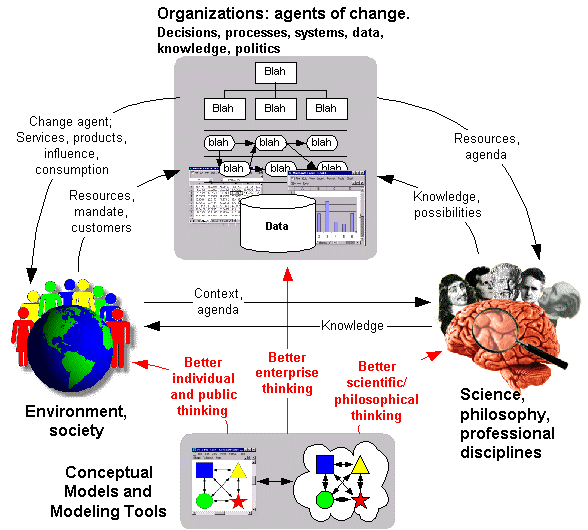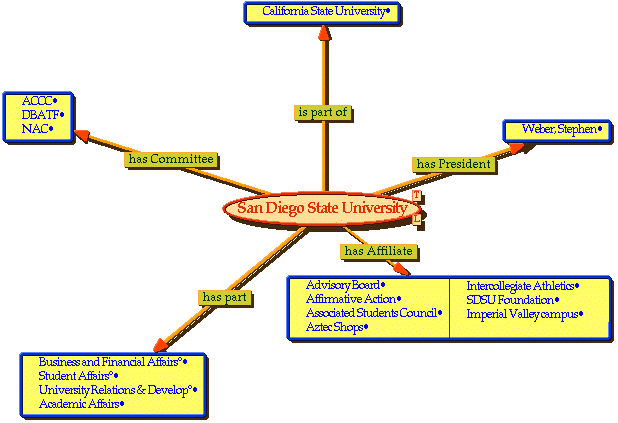Last edit: 05-03-17 Graham Wideman
| Last edit: 05-03-17 Graham Wideman |
Personal |
| Concept Modeling and Knowledge Sciences Article created: 98-07-10 |
In each of the fields that I've worked, I seem to come up against problems where progress is stalled or thwarted for what appear to be primarily knowledge-related reasons.
In a complicated technical or scientific situation it may be difficult to simply acquire or develop the knowledge in the first place. In other cases where many parties are involved, perhaps to acquire resources or authority for a course of action, there may be complex issues that need to be articulated, communicated, advocated, deliberated upon, resolved and so on. There may be conflicting or counter-intuitive aspects of different parts of the picture which require an appreciation of an entire system of interacting pieces.
There can of course be plenty of other reasons... but to get those unstuck you often need to understand the reasons, which brings us back to a knowledge problem.
Scenarios usually seem to include some combination of the three main interacting elements in the following figure. As I have drawn, I came to the conclusion that there is a pressing need to advance our ability to think, understand and communicate about complex subjects of all sorts, by way of conceptual models and tools.. I see great benefits in the few fields where some representative advances are taking place (some of the design fields, for example). So I was attracted to the idea of working on expanding the facility of conceptual modeling to handle a broader range of subjects.

For me, this is not just a problem that's somewhere "out there". It's something that I personally encounter. Just a few examples.
In the early '90s I ran across the work of the SemNet Research Group with Semantic Networks. Over a few years I started to pursue some semantic network and concept modeling explorations of my own, and used these extensively in my position doing business and systems analysis for SDSU. Along the way I joined the SemNet group, and endeavored to bring a "business analysis" perspective to the team.
(I also try to keep principal SemNet programmer and now good friend Joe Falleti company from time to time. Ironically, just as I've departed from an IS environment burdened with a Y2K problem, he's recently put SemNet on hold and taken a job as a Y2K analyst!)
Below is a sample SemNet "frame", produced by the SemNet website generator facility, based on information from my SDSU organization structure survey. In the real thing, all the objects are hyperlinked to provide drill-down (or up or across) capability.
 |
Which brings us to the present, where I have decided to focus more extensively on concept modeling and related fields, beginning with a survey of ongoing research, development and applications work in the field. This is covered elsewhere on this site.